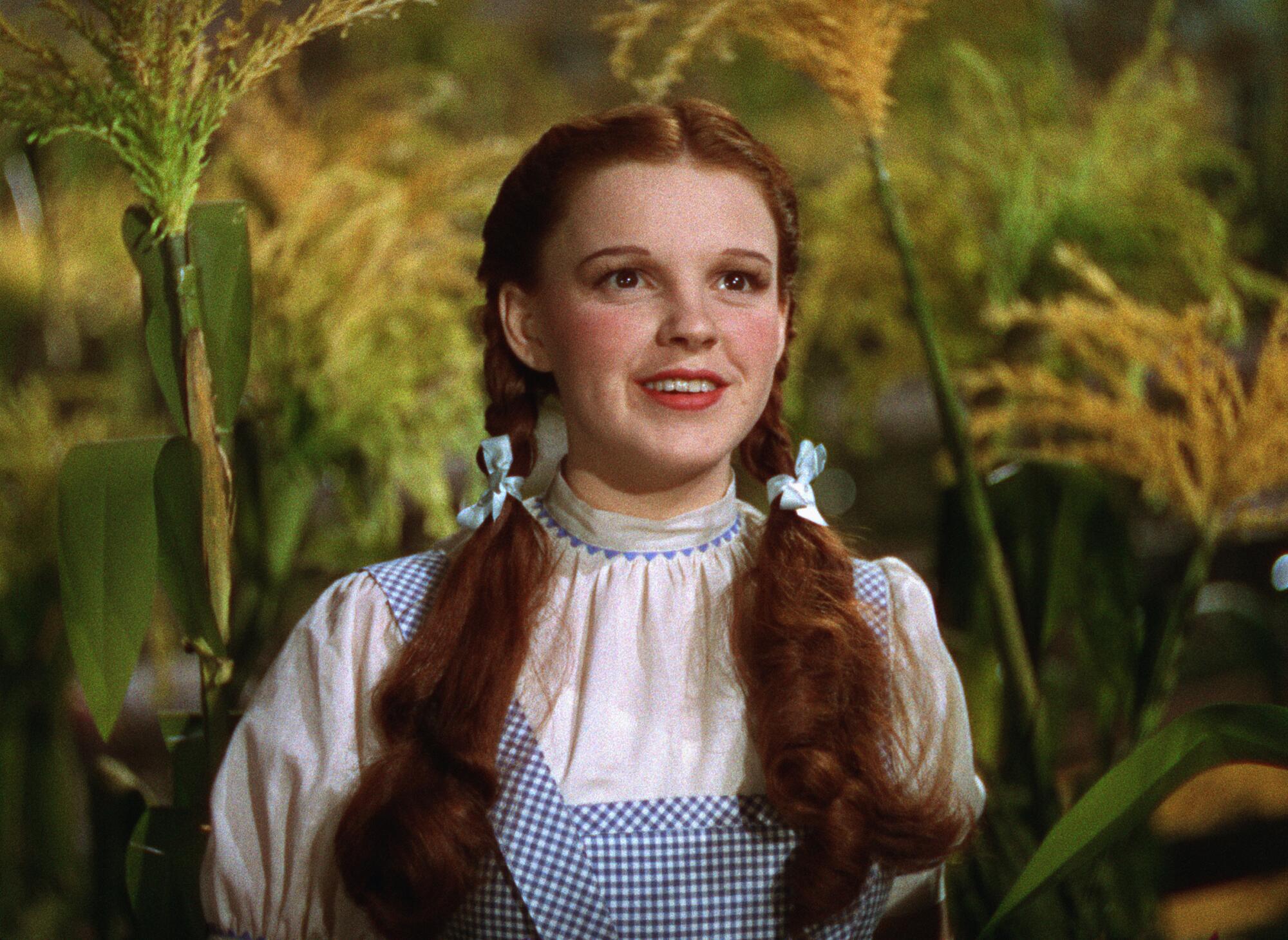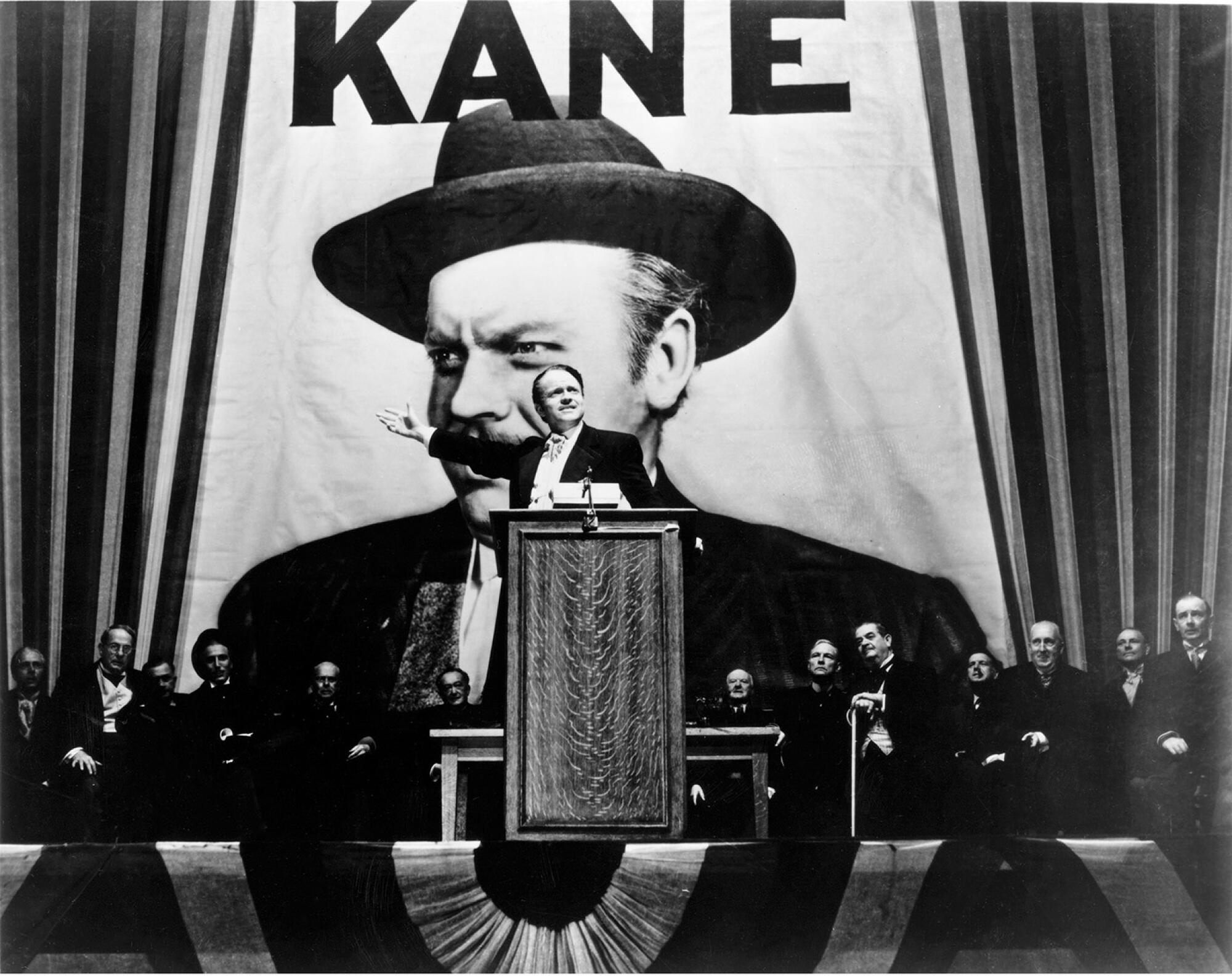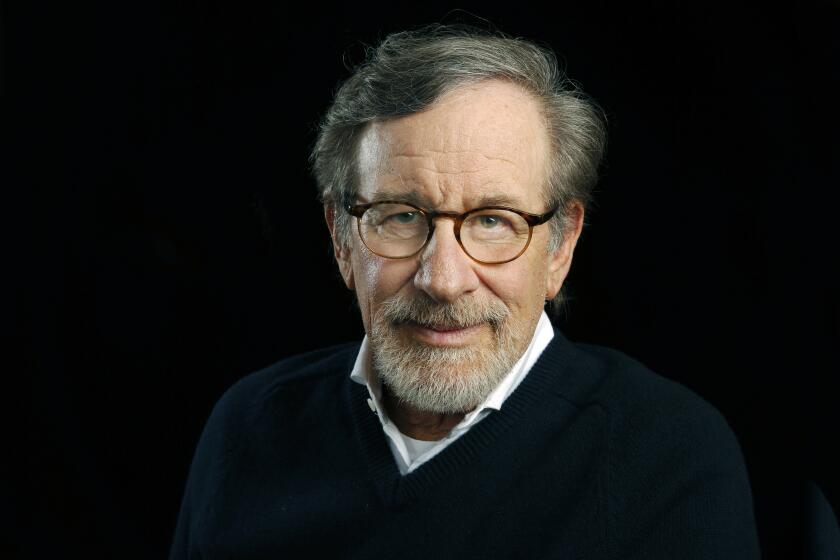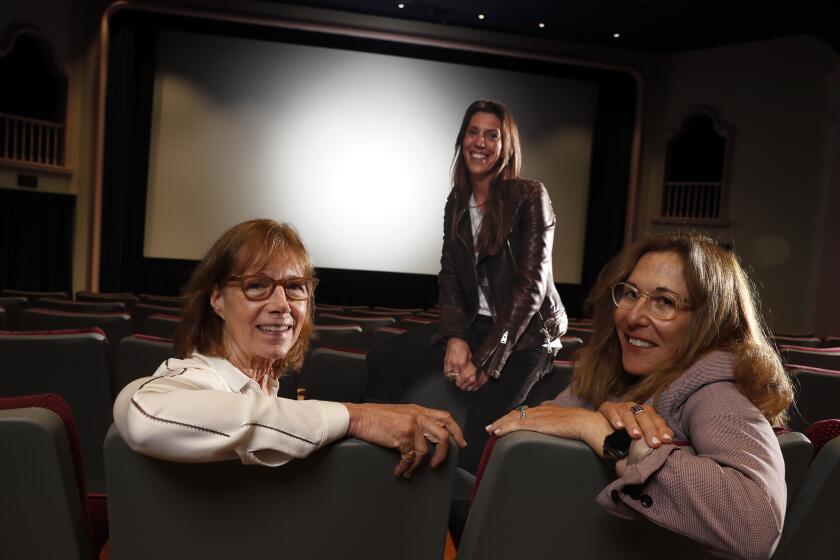Photo illustration by Ross May / Los Angeles Times; photos by Turner Entertainment; Warner Bros. Pictures; Cino Del Duca; MGM
- Share via
Television. Movies. Movies on television. Movies as television. Their association goes back to the early years of commercial TV, when talking pictures were but two decades old, and though the terms of the relationship have changed over time, they remain tightly bound. Most everyone will have seen more movies on TV than in a theater; it’s where they live, and live on.
Nothing has demonstrated this more clearly than the recent alarm — the shock, the horror, the outrage — over firings at the top at Turner Classic Movies, another fine example of an out-of-touch executive riding in on a merger and breaking what doesn’t need to be fixed. The cries of the devoted citizenry were joined notably by Martin Scorsese, Steven Spielberg and Paul Thomas Anderson, leading not only to the rehiring of Programming Vice President Charles Tabesh but also to the directors coming on board as volunteer curators. Alone among broadcasters, cable networks, premium cable networks and streamers, TCM remains dedicated, in an intelligent, curated manner, to the deep history of film.
Motion picture studios were interested in the TV business as it made its debut at the turn of the midcentury, but for a variety of historical, legal and technical reasons, the medium became an extension of radio instead, setting up a rivalry expressed on the big and little screen alike. Movies mocked TV; TV parodied the movies.
As to airing films on television, Jack Warner’s announcement that “the only screens which will carry Warner Bros. products will be the screens of motion picture theaters the world over” reflected the industry’s early sentiment — and going to war against the small screen, the big screen got even bigger, the pictures more colorful, their length longer, their soundtracks louder, their staging more epic.
Steven Spielberg, Paul Thomas Anderson and Martin Scorsese will be involved in curating the classic film channel which will now operate under the company’s top film studio execs.
As Cole Porter wrote in 1955, “If you want to get the crowds to come around / You gotta have glorious Technicolor, breathtaking Cinemascope / And stereophonic sound.”
Nevertheless, old movies did creep onto TV through the 1950s, beginning with B pictures on local stations and gradually progressing to A pictures in network prime time. In 1956, CBS paid MGM $225,000 for a single airing of “The Wizard of Oz,” which it showed uninterrupted and uncut — something like $2.5 million today, if those online inflation calendars are correct, spent on filmic prestige.
In 1961, “NBC Saturday Night at the Movies,” a weekly showcase stocked with films from the 20th Century Fox library, premiered with “How to Marry a Millionaire.” Other networks followed suit with their own movie nights, and other licensed libraries, as it became clear that there was money to be made, that television wasn’t going to destroy the picture business and that there was no shame in the association. (Fear springing eternal, both TV and film would later campaign together against “pay TV” — which nowadays is, of course, most TV.)

Movies! Movies on TV! Films uncut and interrupted were a main selling point of early cable television, basic and premium. The names tell the story: Home Box Office, launched 1972; its splinter channel, Cinemax, 1980; Showtime, 1976; the Movie Channel, 1973. On basic cable, there was the American Movie Channel (originally American Movie Classics, later AMC), born 1984.
From 1974 to 1989, Angeleno cinephiles subscribed to the Z Channel, a service that, much as TCM later would, operated as a kind of cinematheque of the air, with a lively, critically acute monthly viewing guide and thematic programming dedicated to actors, directors or genres; it showed classics, cult films, foreign films, directors’ cuts and letterboxed widescreen films. (A 2004 documentary by Alexandra Cassavetes, daughter of actor-director John, “Z Channel: A Magnificent Obsession,” currently streams on several platforms.)
Originally, networks sought licensing deals with studios to gain access to their libraries; then corporate mergers and acquisitions put libraries in the pockets of the networks, cable companies and streamers themselves.
This era began in earnest with Ted Turner’s 1986 purchase of Metro-Goldwyn-Mayer/United Artists. He would sell back the studio but keep most of the library, which also included pre-1950 Warner Bros. films, and the next year gained the rights to 800 RKO pictures — a collection that first fed TNT and, in 1994, found its dedicated home at Turner Classic Movies. (Turner, as these things go, is now subsumed in Warner Bros. Discovery).
The complete guide to home viewing
Get Screen Gab for everything about the TV shows and streaming movies everyone’s talking about.
You may occasionally receive promotional content from the Los Angeles Times.
Media megadeals turn in no small part on the perceived worth of a studio’s library and the intellectual property it contains. The irony is that much of this material — whatever is deemed unprofitable — remains locked up in vaults, never aired and unavailable on video or to stream.
Certainly, television — in the ad-supported, cathode-ray tube age — was an imperfect medium for watching theatrical features. Movies were cut for time, pockmarked with commercials; the TV picture was not as sharp as the film image; screens at first were small, and their 3:4 “standard” aspect ratio, while it mirrored movies of the ’30s and ’40s, was unfriendly to Cinemascope and VistaVision and the like. Before letterboxing was introduced into home video — with initial resistance from studios, retailers and viewers — and flat screens took over, widescreen films on television were seen literally only in part: “Panned and scanned,” the picture cut back and forth to whoever was speaking in a scene, negating cinematographic intent. We watched them nevertheless.
Older films would sometimes play in theaters — I particularly remember a Saturday matinee of “Around the World in 80 Days” — and as young adults we spent a lot of time in revival houses filling in the blanks in our education. But television was the beachhead the movies established in my mind. When I was small, and spent as much time as allowable in front of a TV set, the history of talking pictures was only four or five decades old; you could take it in whole.
Along with a healthy serving of classic films — your “Casablanca,” your “Citizen Kane” — broadcast TV in those days showed movies that otherwise would have been out of circulation, perhaps permanently: the adventures of Ma and Pa Kettle, the Bowery Boys, the Little Rascals, the Three Stooges, Francis the Talking Mule. They may sound like piffle, and perhaps they are, but they were formative.

There was the Early Show in the afternoon, and the Late Show after prime time, and the Late, Late Show after that. The Million Dollar Movie — a format created in 1955 at New York’s WOR that spread around the country — showed the same film five nights running, allowing for deep study. (It was the closest thing to owning a movie before you could own a movie.) There were dedicated slots for science fiction and horror flicks, hosted by local celebrities like New York’s Zacherly, Pittsburgh’s Chilly Billy, Sir Graves Ghastly in Detroit. Angelenos of succeeding generations may remember Vampira, Seymour and Cassandra Peterson’s nationally known Vampira-esque Elvira, Mistress of the Dark, who, from her blood-red sofa at Channel 9 (then KHJ, now KCAL), branched nationally into movies and merchandise and “Tonight Show” appearances.
In pre-cable L.A. we were relatively privileged, with three networks and four local stations (not counting UHF, which never came in well); we got a lot of movies. Generally, you watched whatever was on, be it screwball comedy, film noir, war movie, swashbuckling adventure, costume drama or romantic melodrama — good or bad, it was broadening. The arrival of home video, of which the streaming platforms are a digital extension, meant one could watch the same things over and over again. Availability, paradoxically, can lead to a narrower range of experience: Given a choice, we are likely to repeat a previous choice and watch “Ferris Bueller’s Day Off” or “The Matrix” for the 40th time rather than explore something new. With TCM, in its linear, video-not-on-demand programming, you watch what’s on; you take what you get. It allows for the happy accident, the unexpected discovery.
Old movies on TV provided me with an education not only in the history of film but also of the people. They capture the actual reality of the time in which they’re made — the fashions, humor, morals, language, body language — but also what that time made of earlier times. A western made in the ’30s, ’40s or ’50s, say, will tell you as much or more about the preoccupations, perceptions and prejudices of the ’30s, ’40s or ’50s as about the Old West. Movies gave me a sense of being alive in history, of belonging to a bigger, older world that existed before me, around me and ahead of me. In their variety, they suggested a range of possibilities as to what one might make of a life.
L.A.’s reopened Vidiots, both a theater and video store, hopes to inject a sense of shared commitment and community into the local film scene.
Are the youth of today as culturally curious as the youth of yesterday like to believe we were? The periodically documented resistance of younger viewers to movies made in black and white would, at least in this respect, suggest not. It’s also why TCM is more or less alone in showing older movies, and why any threat to its existence becomes distressing to fans.
Undoubtedly, there are younger viewers interested in what TCM has to offer. Still, it’s not unlikely that many of the damn kids who won’t get off my lawn know nothing of the insouciant grace of Astaire and Rogers, or the metafictional antics of Hope and Crosby. We may never have an occasion, when I am not yelling at them, to discuss the perky brilliance of Jean Arthur or the importance of William Demarest to the films of Preston Sturges, of whom they may also be ignorant.
And yet one generation’s treasure chest may be another’s dustbin. There could be 10-year-olds now eagerly immersing themselves in the comedies of Will Ferrell or Eddie Murphy as I did in those of Bob Hope and Danny Kaye. If the 21st century is as ill-informed about the early to late-middle 20th as surveys occasionally imply, they may at least be learning something about the ’80s, the ’90s, even the aughts, from the movies they watch on TV, and of their own place in history. May it give them perspective as they tumble into this century’s ’30s, ’40s and ’50s.
And long live TCM.
More to Read
The complete guide to home viewing
Get Screen Gab for everything about the TV shows and streaming movies everyone’s talking about.
You may occasionally receive promotional content from the Los Angeles Times.









